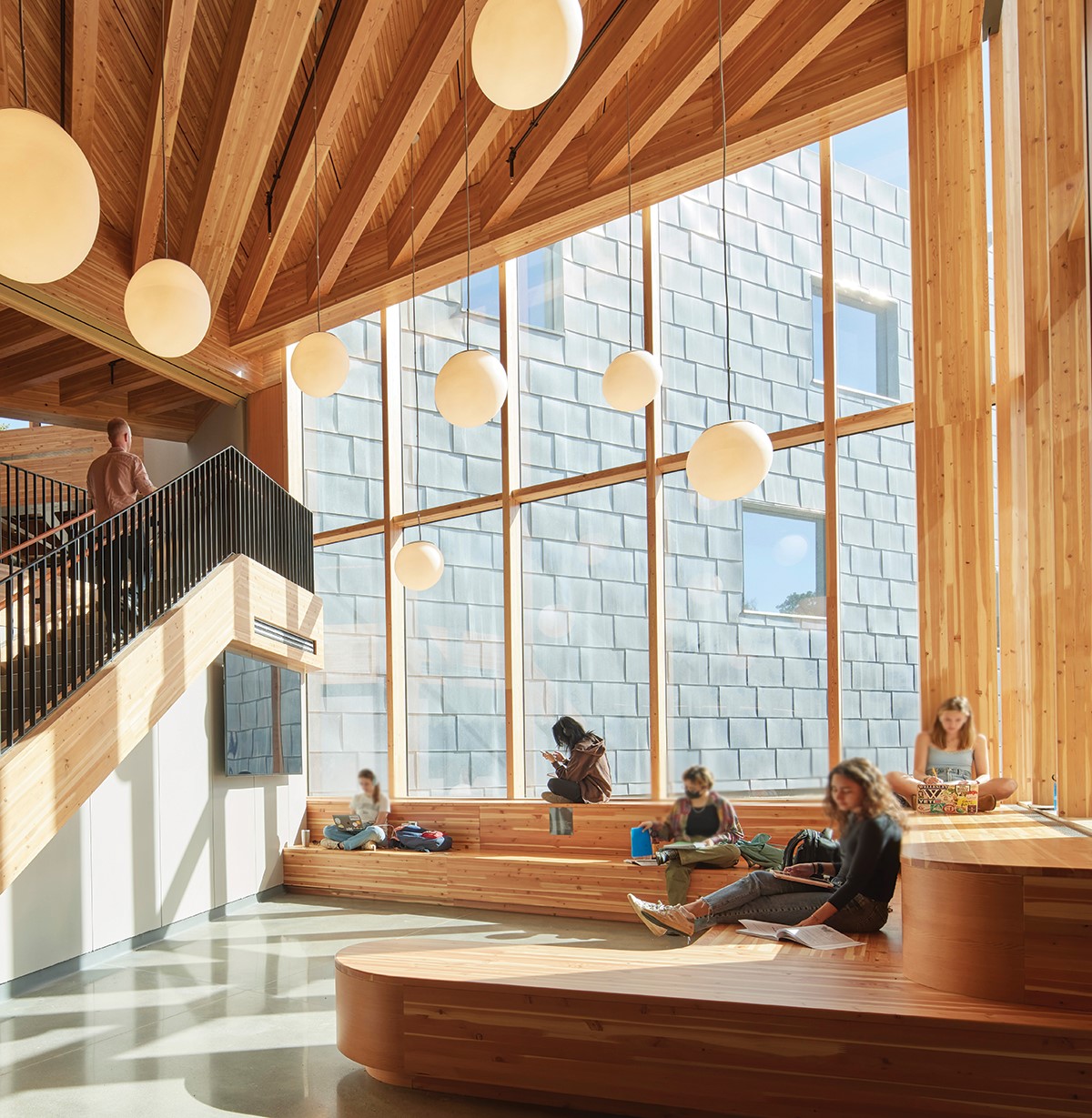Glazing Adapts to Meet Emerging Building Trends
The future of glazing looks to enhance safety, sustainability and design innovation for better building performance and occupant well-being

Above: Mass timber and timber curtain walls support sustainable and biophilic design. Photo by Dave Burk at Skidmore, Owings & Merrill, courtesy of Technical Glass Products.
The Bottom Line: The glazing industry continues to evolve with trends like increased use of security-rated glass, improved acoustics, timber curtain walls for sustainable design and hurricane-rated systems, all aimed at enhancing occupant safety, experience and wellness.
The glazing industry changes constantly, requiring architects, glaziers and manufacturers to adapt. Likewise, designers push the envelope on glazing use—planning buildings that incorporate larger lites, narrower frames and higher performance ratings into more spaces.
Each year, the glazing industry responds with new developments and better performing systems.
How has the glazing landscape changed? What trends can we expect in the new year?
More security-rated glass in schools
According to reports from Glass Magazine, glaziers have seen more projects with security- and ballistic-rated glass year over year. In 2021, 48% of glaziers were involved with projects that included security-rated glass. In 2024, 73% of glaziers had projects that used ballistic-rated glass, making it the second most specified specialty glazing after fire-rated glass.
As the number of projects that use security- and ballistic-rated glass increases, it may be more common to see instances where multiple safety and security concerns overlap. In these cases, glazing systems tested to meet standards for fire and security ratings can be a viable solution for achieving enhanced security and code compliance.
Improving building acoustics
For both the interior and exterior of a building, designing for an acoustically comfortable environment is an increasingly important consideration for privacy and positive occupant-experiences. This is especially true as urban density increases and flexible design becomes more common, both of which can prompt acoustic isolation considerations.
Designers have responded by using acoustic paneling, artificial intelligence to improve room acoustics and biophilic design to absorb sound.
Glass can also contribute to acoustic design. It can improve access to daylight to support sound absorbing plants. Further, channel glass can meet acoustic performance goals on both sides of the building façade with Sound Transmission Class ratings up to 44.
Branching into timber construction
As sustainability and biophilic design receive more emphasis, mass timber projects and timber curtain wall systems will likely see increased popularity.
Timber curtain walls help connect occupants to their surroundings while also providing the warm aesthetics of wood to interior spaces. As a structural-load bearing system, this turn-key solution allows large free spans without additional supports. Likewise, these systems represent lower embodied carbon and improved thermal breaks for more eco-friendly construction and operation.
With these benefits, timber curtain walls are set to see more prominence in university and other commercial construction projects.
Improved weather resilience
As the building industry continues to push for net zero, architects are constantly navigating challenges in increasingly stringent energy code requirements. However, sustainability goes beyond energy efficiency. It also includes a building’s ability to withstand natural disasters.
According to Princeton researchers, the frequency of windstorms and hurricanes has increased and is likely to continue to. This makes designing buildings that can endure the elements important for both occupant safety and environmentally friendly construction.
As such, architects may see more projects that request walls and roofs with higher impact and wind resistance ratings. Both qualities can support buildings that more readily withstand extreme weather. While previously this may have meant using opaque materials, designers now have more options, including glass that has high impact ratings and framing with optimum wind load resistance.
Hurricane-rated glazing systems can help building professionals protect occupants from wind and debris and improve sustainability by reducing the need for reconstruction after intense storms—all without compromising views outside of the built environment.
Enhanced occupant experience
No matter what prompts an industry change, it is almost always to improve occupant experience, safety and wellness. This is particularly important given the Environmental Protection Agency estimates Americans spend between 70% to 90% of their time indoors.
Finding new and better ways to support occupants physically and psychologically will continue to be at the heart of most design and construction trends. And glass will remain a viable solution to these changes and challenges.


